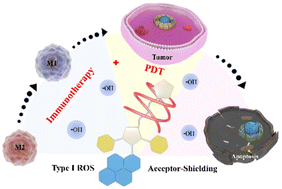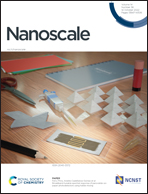An acceptor-shielding strategy of photosensitizers for enhancing the generation efficiency of type I reactive oxygen species and the related photodynamic immunotherapy†
Abstract
Developing efficient photosensitizers (PSs) that can generate type I reactive oxygen species (ROS) under illumination is considered an effective way to improve photodynamic therapy (PDT) outcomes due to the hypoxic nature of the tumor environment, but also is very challenging. Herein, a new PS of the multiarylpyrrole (MAP) derivative with a typical donor–acceptor structure was synthesized to efficiently generate type I ROS by using an acceptor-shielding strategy in their aggregated state. The enhanced generation mechanism of type I ROS originated from its ultralong triplet lifetime and the narrow singlet–triplet energy gap of the MAP. More importantly, type I ROS can transform protumoral M2 macrophages (M2) into antitumoral M1 macrophages (M1), which showed synergistic immunotherapy in in vivo experiments. Therefore, introducing shielding groups into acceptors provides general guidance for developing efficient PSs in the aggregation state for clinical PDT.

- This article is part of the themed collection: 2022 Nanoscale HOT Article Collection


 Please wait while we load your content...
Please wait while we load your content...